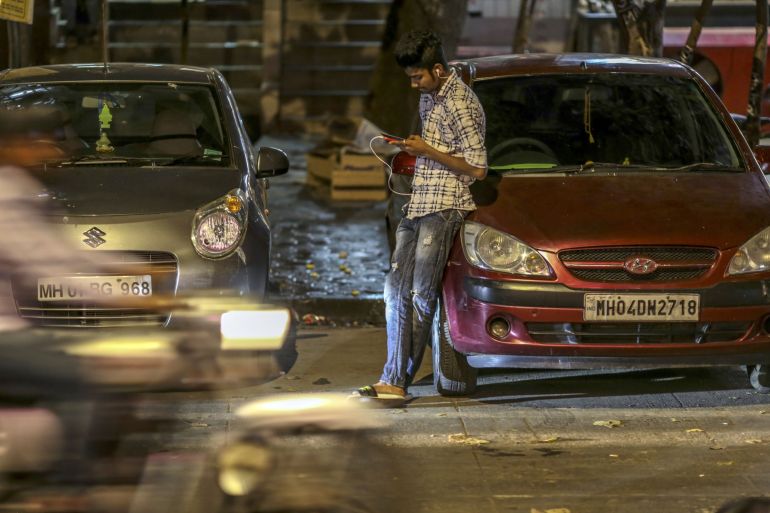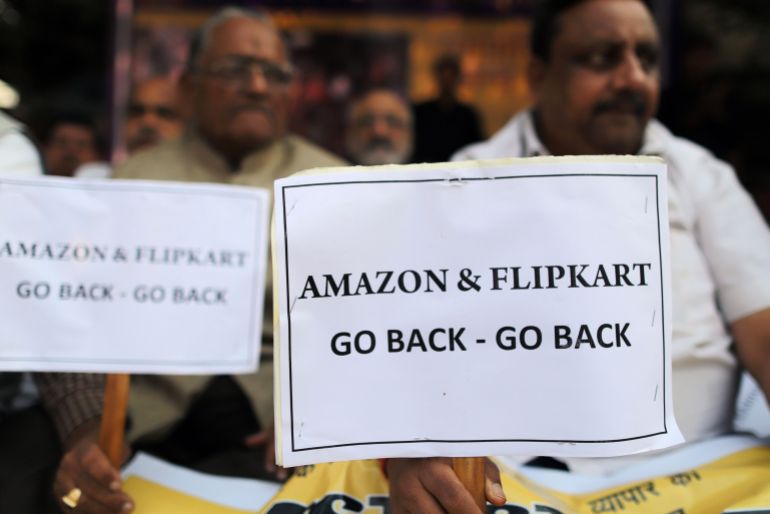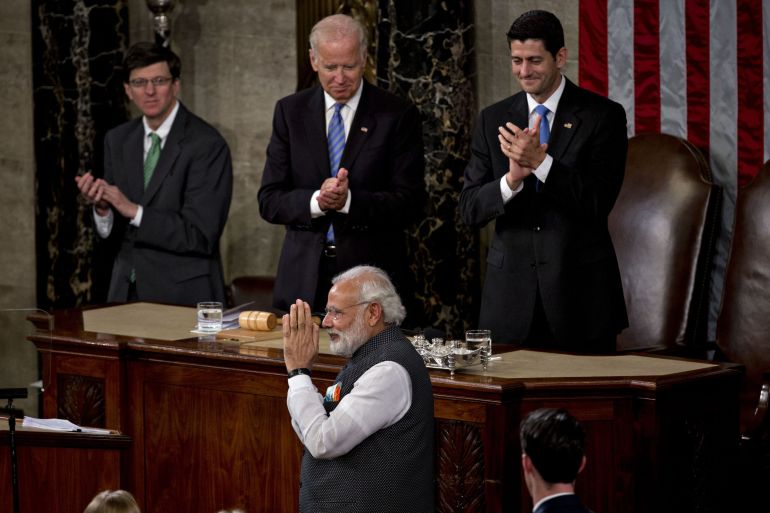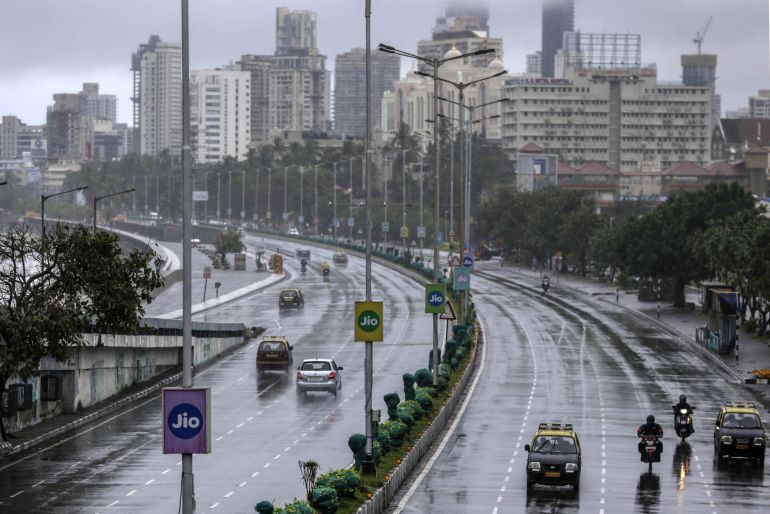The US and India have a lot of work to do on digital cooperation
As tensions escalate between US social media giants and India’s gov’t, is there a more productive path forward for both?

New Delhi, India — It is an unfolding drama worthy of a Bollywood film.
In February, Twitter took down hundreds of accounts that were posting on the continuing farmer protests against three agriculture laws passed in India last year, only to restore some of them after a massive public backlash.
Keep reading
list of 4 itemsUS Congress piles pressure on Big Tech CEOs over misinformation
Facebook bans politician from India’s BJP for hate speech
Amazon faces new antitrust challenge from Indian online sellers
Twitter said the accounts were taken down to comply with orders from the Indian government. But that was just the start of this year’s tensions between a United States social media giant and the Indian government.
Authorities in New Delhi have passed new rules that require, among other things, that social media platforms disclose the identities of people who post content – eliciting howls of protests from tech firms and free-speech activists.
Indian police visited Twitter’s offices in May after it failed to comply with a request to remove a “manipulated media” label it had slapped on tweets from politicians belonging to the country’s governing Bharatiya Janata Party (BJP). And in late June, Twitter’s India head was slapped with a police complaint about a map of India that showed the politically sensitive region of Kashmir as a separate country, while a far-right group filed a police complaint on June 30 alleging Twitter promoted child pornography on its platform.

It’s not just Twitter that is in the crosshairs. Facebook and Amazon have also found themselves butting heads with the government of Prime Minister Narendra Modi – clashes that underscore how a lack of formal cooperation can see relations between a US tech giant and the Indian government utterly derail – to the possible detriment of both.
India boasts 1.1 billion mobile phone subscribers and some 757 million internet users, most of whom go online via their handsets, according to the latest government data. That potential customer pool is all the more alluring given India’s growing digital advertising market which is expected to increase from $2.2bn last year to $3.2bn by end of 2022, according to digital marketing firm Dentsu India.
The Indian digital ecosystem, while still at an early stage, “is one of the most important markets out there,” said Anand Raghuraman, vice president at the Asia Group, a strategic advisory firm. “Leading tech companies recognise this and that’s why they continue to invest in India in a big way and we don’t see that changing in the near term,” he said.
With an opportunity that vast, it is easy to see how social media giants like Twitter and Facebook to streaming platforms Amazon and Netflix are willing to dance to at least some of New Delhi’s digital diktats. But global tech firms also know from experience that India’s tech policy landscape is prone to frequent shifts and shaped by complex regulatory structures, warned Raghuraman.
“The real question is what will rise faster – India’s digital economy or the policy barriers gating access to it,” he said, adding that both countries need to have a “digital dialogue” and “an honest conversation” to resolve issues and take their relationship to the next level.
India also stands to gain from more cordial relations with US tech behemoths, said Rahguraman, by helping New Delhi check neighbouring China’s influence at home and abroad, including in the digital domain. It also anchors US tech companies and their deep pockets to India, helping to create jobs and bolster innovation.
Building trust, slashing red tape

Building mutual trust at a regulatory level between the US and India is crucial for US firms to claim a slice of India’s digital market without having to worry about being undercut by domestic Indian players stepping in to provide copycat services.
It is hoped that renewed enthusiasm for multilateral agreements under the administration of US President Joe Biden could yet open the door for deeper digital cooperation between Washington and New Delhi as there are a lot of barriers to smoother relations.
For example, anytime Indian authorities want information from a US tech company, they have to navigate a labyrinth of red tape through the Treaty on Mutual Legal Assistance in Criminal Matters (MLAT).
That means if Indian police submit a request for information from a US tech firm, it must first clear the state’s headquarters. From there, it’s sent to India’s Ministry of Home Affairs, which will then send it to the foreign ministry, which in turn will forward it to the Indian embassy in Washington, DC. From there it goes to the office of international affairs at the US Federal Bureau of Investigation, after which a judge weighs in on the request. Assuming the judge authorises sharing the information, it travels back the same route back.
“It takes anywhere from 18 months to three years for an average MLAT request to be complied with,” said Udbhav Tiwari, public policy adviser at Mozilla in India. “You need an entire office just to deal with the number of requests that come from India seeing that there are so many users here.”
One thing that would make it easier for foreign tech companies to operate in India, said Tiwari, is if New Delhi were to overcome some obstacles and be certified under the Clarifying Lawful Overseas Use of Data (CLOUD) Act – a US law under which US tech companies are obliged to provide a user’s stored data on any server they own and operate when requested by warrant by another government.
Disdain for Big Tech
There is plenty of talk in Washington about checking – and even early steps to check – the immense power of Google, Facebook, Amazon, Apple and others. Some US lawmakers want to break up tech behemoths, and scrap a piece of internet-related legislation – Section 230 of the US Communications Decency Act – that shields platforms from legal liability over content that users post to their platforms.
Those efforts, which gained momentum during the administration of former US President Donald Trump, have continued under the Biden administration, and could “play into the government of India’s complaints” on social media sites like Twitter and Facebook and their content moderation policies, Salman Waris, partner at TechLegis Advocates & Solicitors, told Al Jazeera.
“The Biden government’s disdain for Big Tech will encourage the Indian government to take a more aggressive stance with respect to some of these players and will also give further impetus to the whole scheme to promote local Indian companies and the ‘self-reliant India’ rhetoric,” he said.
In the days following the Twitter incident in February, homegrown Indian short-messaging app Koo, which has a yellow bird for a logo, saw a surge in downloads after government officials switched to it.
Similarly, after New Delhi banned China’s Bytedance-owned short video app TikTok last summer over tensions with its eastern neighbour, a slew of domestic copycats mushroomed overnight, all pushing their Indian roots.

If the US government does end up dealing a hefty blow to any of the US big tech firms and their business models, it will have global ramifications, independent analyst Rajiv Sharma told Al Jazeera.
That could be felt in India where both Facebook and Google paid handsomely last year for a stake in Jio Platforms, the tech and telecom business of Reliance Industries, headed by India’s richest man, Mukesh Ambani.
“If something hurts the capabilities of Google and Facebook, the euphoria around the three coming together may take a beating,” said Sharma.
Room for collaboration
One area where India can offer some digital lessons to the US is on net neutrality, the principle that internet service providers must treat all content equally and not discriminate or charge different prices.
“India has some of the strongest net neutrality rules” and the Telecom Regulatory Authority of India can share information and knowledge with its US counterpart, the Federal Communications Commission, suggested Mozilla’s Tiwari.
The two could also cooperate on cybersecurity. The Biden administration is well positioned to build on the Framework for the US-India Cyber Relationship signed by former US President Barack Obama.
“It’s a good time for both sides to look at that agreement to see what progress was made and what next needs to be done,” said Deepak Maheshwari, an independent public policy consultant.
Next-generation 6G telecom infrastructure could also be an area of focus for the two governments.
India, along with the US and a handful of other countries, has already raised security red flags about allowing Chinese majors like Huawei Technologies and ZTE Corp to build next-generation telecoms networks.
And some Indian telecom players avoided partnering with Chinese telecom giants for upcoming 5G trial operations, choosing to work instead with European and Korean players, a government statement in early May revealed.
“Geopolitics will be at the heart of this,” said Asia Group’s Raghuraman. “It would be a strategic play.”
At least the issue of taxation may become less of a headache. India was one of the first countries to impose an “equalisation levy” – a tax on a portion of advertisement sales revenue that big tech companies make in India – that was expanded this year to include advertisement sales revenue from e-commerce platforms.
But the global patchwork of digital services taxes could become history. In a major victory for the Biden administration last week, 130 countries – including India – backed a blueprint to adopt a global corporate minimum tax rate of at least 15 percent, and require big tech companies to pay taxes in the country where their goods and services are sold.